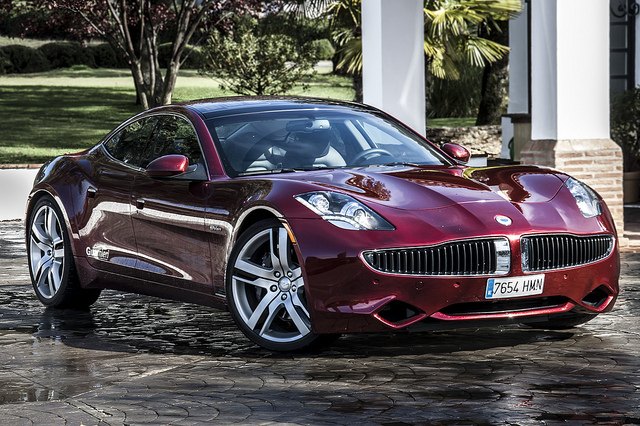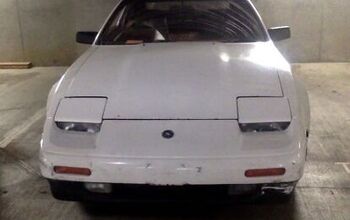Green Auto Loan and Grant Programs on Trump's Budget Chopping Block

Automakers would have to fund a larger share of future green technology projects if the Trump White House’s budget blueprint passes as written.
The administration proposes to do away with a little-used — and sometimes controversial — U.S. Energy Department loan program, as well as a grant program dedicated to spurring advanced fuel-saving technologies.
Contained in the budget blueprint is the elimination of the federal government’s Advanced Research Projects Agency-Energy program, known as ARPA-e. That initiative, created in 2007, doles out $300 million each year for environmentally friendly research initiatives.
While automakers tapped into the program, a number of Silicon Valley startups used the fund as seed money for marketable technologies. Green energy companies also received money from the program.
In light of Trump’s intent to reduce funding to the Environmental Protection Agency, as well the government’s plan to re-open the EPA’s midterm review of 2025 fuel efficiency targets, it’s not surprising the proposal has met fierce criticism. In response, the Trump administration claimed that the “private sector is better positioned to finance disruptive energy research and development and to commercialize innovative technologies.”
ARPA-e isn’t the only federal initiative poised to bite the dust, but it’s arguably the most controversial of the proposed eliminations. Also on the chopping block is the Advanced Technology Vehicle Manufacturing loan program, created in 2008. That program, unused since 2011, became a political lightning rod after low-cost loans were awarded to ill-fated Fisker Automotive and another failed startup. Taxpayers, still recovering from the recession, took a bath.
Three existing automakers received billions of dollars from the program. Ford walked away with a $5.9 billion loan in 2009, while Nissan saw $1.45 billion the following year. Also in 2010, upstart Tesla Motors claimed $465 million from the program’s $25 billion pool.
While it hasn’t been used in years, the program’s existence provides hope and opportunity to companies, argues the National Resources Defense Council. The environmental advocacy non-profit has stated the program “plays a critical role in bringing promising technologies out of the lab and into the real world, bridging a funding gap that entrepreneurs call ‘the valley of death.'”
[Source: Reuters] [Image: David Villarreal/ Flickr ( CC BY-SA 2.0)]

More by Steph Willems
Latest Car Reviews
Read moreLatest Product Reviews
Read moreRecent Comments
- FreedMike I would find it hard to believe that Tesla spent time and money on developing a cheaper model, only to toss that aside in favor of a tech that may or may not ever work right. Having said that, though, I think what's happening with Tesla is something I've been predicting for a long time - they have competition now. That's reflected in their market share. Moreover, their designs are more than a bit stale now - the youngest model is the Model Y, which is in its' fifth model year. And it's hard to believe the Model 3 is in its' seventh model year. Aside from an interior restyle on the Model 3, neither of those cars looks substantially different than they did when they came on the market. And you can also toss in Tesla's penchant for unnecessary weirdness as a liability - when the Model 3 and Y were introduced, there was no real competition for either, so people had to put up with the ergonomic stupidity and the weird styling to get an electric compact sedan or crossover. Today, there's no shortage of alternatives to either model, and while Tesla still holds an edge in battery and EV tech, the competition is catching up. So...a stale model lineup, acceptable alternatives...and Elon Musk's demon brain (the gift that keeps on giving), All that has undercut their market share, and they have to cut prices to stay competitive. No wonder they're struggling. Solution? Stop spending money on tech that may never work (cough...FSD) and concentrate on being a car company.
- EBFlex “Tesla’s first-quarter net income dropped a whopping 55 percent”That’s staggering and not an indicator of a market with insatiable demand. These golf cart manufacturers are facing a dark future.
- MrIcky 2014 Challenger- 97k miles, on 4th set of regular tires and 2nd set of winter tires. 7qts of synthetic every 5k miles. Diff and manual transmission fluid every 30k. aFe dry filter cone wastefully changed yearly but it feels good. umm. cabin filters every so often? Still has original battery. At 100k, it's tune up time, coolant, and I'll have them change the belts and radiator hoses. I have no idea what that totals up to. Doesn't feel excessive.2022 Jeep Gladiator - 15k miles. No maintenance costs yet, going in for my 3rd oil change in next week or so. All my other costs have been optional, so not really maintenance
- Jalop1991 I always thought the Vinfast name was strange; it should be a used car search site or something.
- Theflyersfan Here's the link to the VinFast release: https://vingroup.net/en/news/detail/3080/vinfast-officially-signs-agreements-with-12-new-dealers-in-the-usI was looking to see where they are setting up in Kentucky...Bowling Green? Interesting... Surprised it wasn't Louisville or Northern Kentucky. When Tesla opened up the Louisville dealer around 2019 (I believe), sales here exploded and they popped up in a lot of neighborhoods. People had to go to Indy or Cincinnati/Blue Ash to get one. If they manage to salvage their reputation after that quality disaster-filled intro a few months back, they might have a chance. But are people going to be willing to spend over $45,000 for an unknown Vietnamese brand with a puny dealer/service network? And their press photo - oh look, more white generic looking CUVs. Good luck guys. Your launch is going to have to be Lexus in 1989/1990 perfect. Otherwise, let me Google "History of Yugo in the United States" as a reference point.


































Comments
Join the conversation
The purpose of the ATVM program was ultimately environmental. Meanwhile, fracking is making America's air cleaner because utilities are switching from coal to natural gas
Agreed. Coal will go away in the US, not because of regulation killing the industry, but because economics. if our elected officials were smart we'd be preparing that workforce for that eventuality rather than pandering to them though.